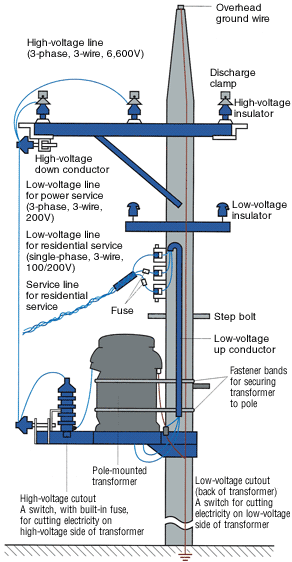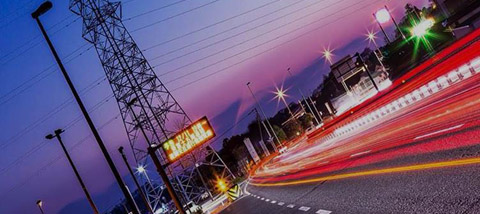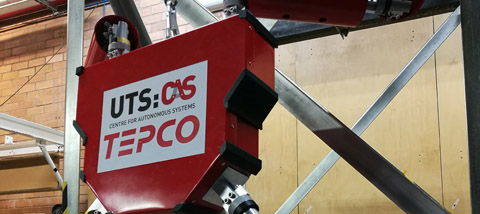Distribution lines make up the last leg of electricity's long journey from the power station to the customer. These facilities, located in close proximity to end users, deliver electricity stably at the required voltages.
Distribution Lines Explained
Electric Power Facilities Located Close to Customers
After electricity has been generated at a power station and sent over transmission lines to a substation area where it will be used, it is delivered to customers by means of distribution lines.
The types of distribution lines include aerial distribution lines suspended from utility poles and underground distribution lines consisting of cables buried below the ground. The voltages of distribution lines may be extra-high-voltage (EHV, 22,000 volts), high-voltage (HV, 6,600 volts), or low-voltage (LV, 200 or 100 volts).
Other distribution facilities are transformers for lowering from high to low voltage, service lines branching from high-voltage or low-voltage distribution lines to the point of service, and meters for measuring watt hours of use.
Typical Distribution Pole

















